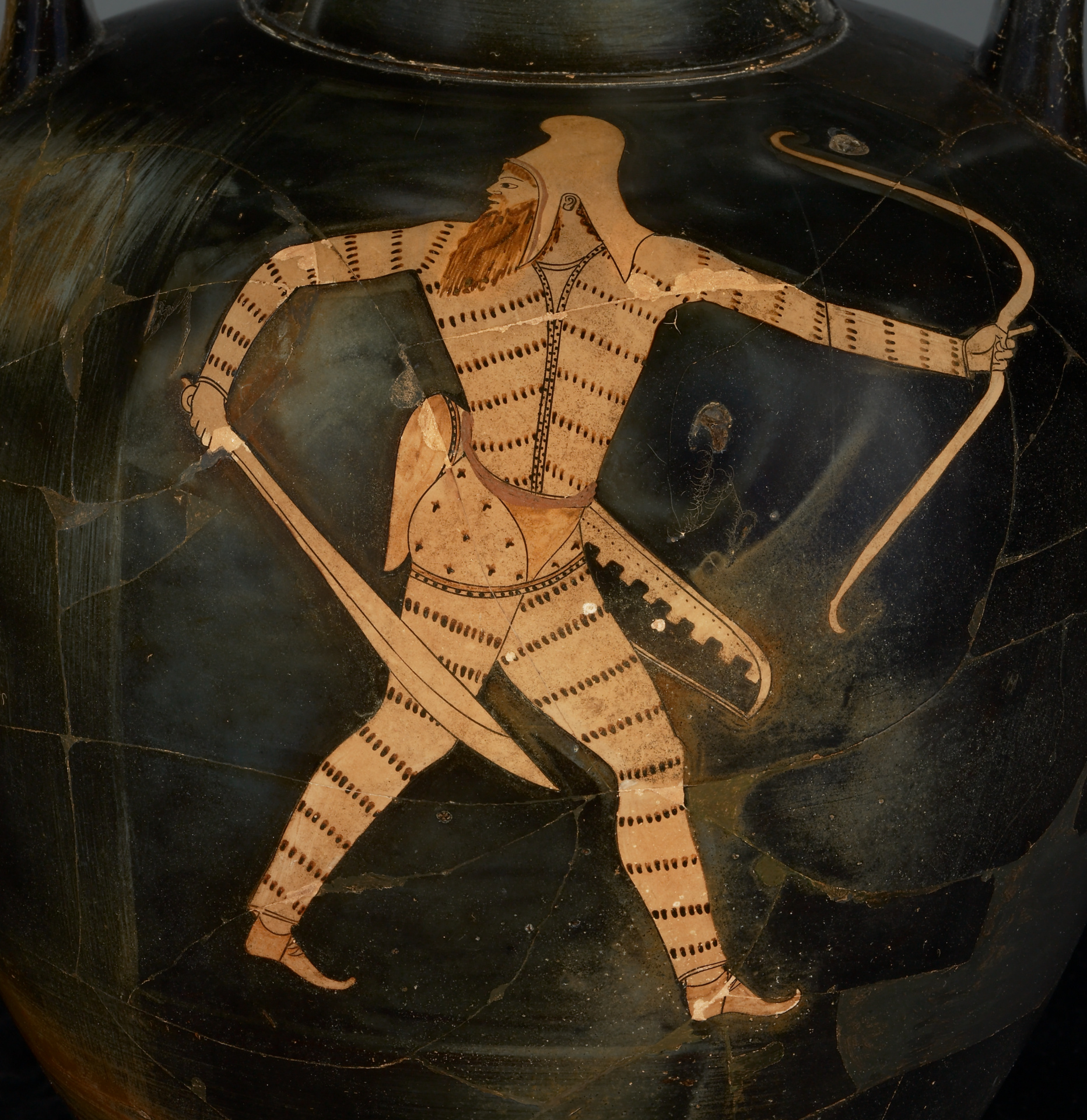Skythian on an Attic Red-Figure Neck-Amphora, Greece, 490–470 B.C
J. Paul Getty Museum.


Title: Attic Red-Figure Neck-Amphora
Artist/Maker: Attributed to the Berlin Painter (Greek (Attic), active about 500 - about 460 B.C.)
Culture: Greek (Attic)
Place: Athens, Greece (Place Created)
Date: 490–470 B.C.
Medium: Terracotta
Object Number: 96.AE.98
Dimensions: 47 × 28.9 cm (18 1/2 × 11 3/8 in.)
Credit Line: Gift of Barbara and Lawrence Fleischman
The body of the vase is black except for two figures, a single one on each side. On side A, wearing greaves, cuirass and a pushed-back Corinthian helmet, a hoplite lunges to the right. His hoplite shield has a shield apron, a swath of fabric or leather that defended against stray arrows. On side B, his opponent flees, wielding a huge sword (machaira). A red band (presumably the strap for his battlement-patterned quiver) encircles his waist, and his soft cap (mitra) has a red stripe. He is characterized as non-Greek by his long bushy beard, patterned costume with sleeves and trousers, the soft cap, and pointed shoes. Together, these details identify him as Persian. On seeing the juxtaposition of a pursuing hoplite and an archer on the run, ancient Athenians would recall the Greek triumphs over the Persians, such as the famous victory at Marathon in 490 B.C. There is a graffito under the foot in Attic script: ON, possibly a price inscription.
Source: The J. Paul Getty Museum, Villa Collection, Malibu, California